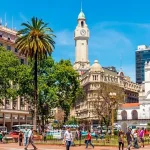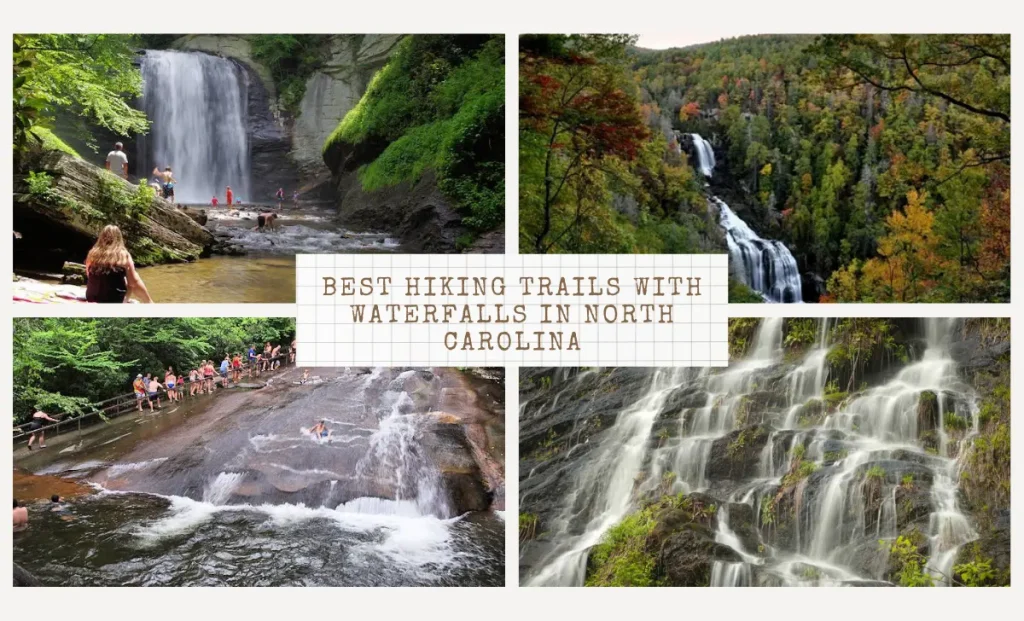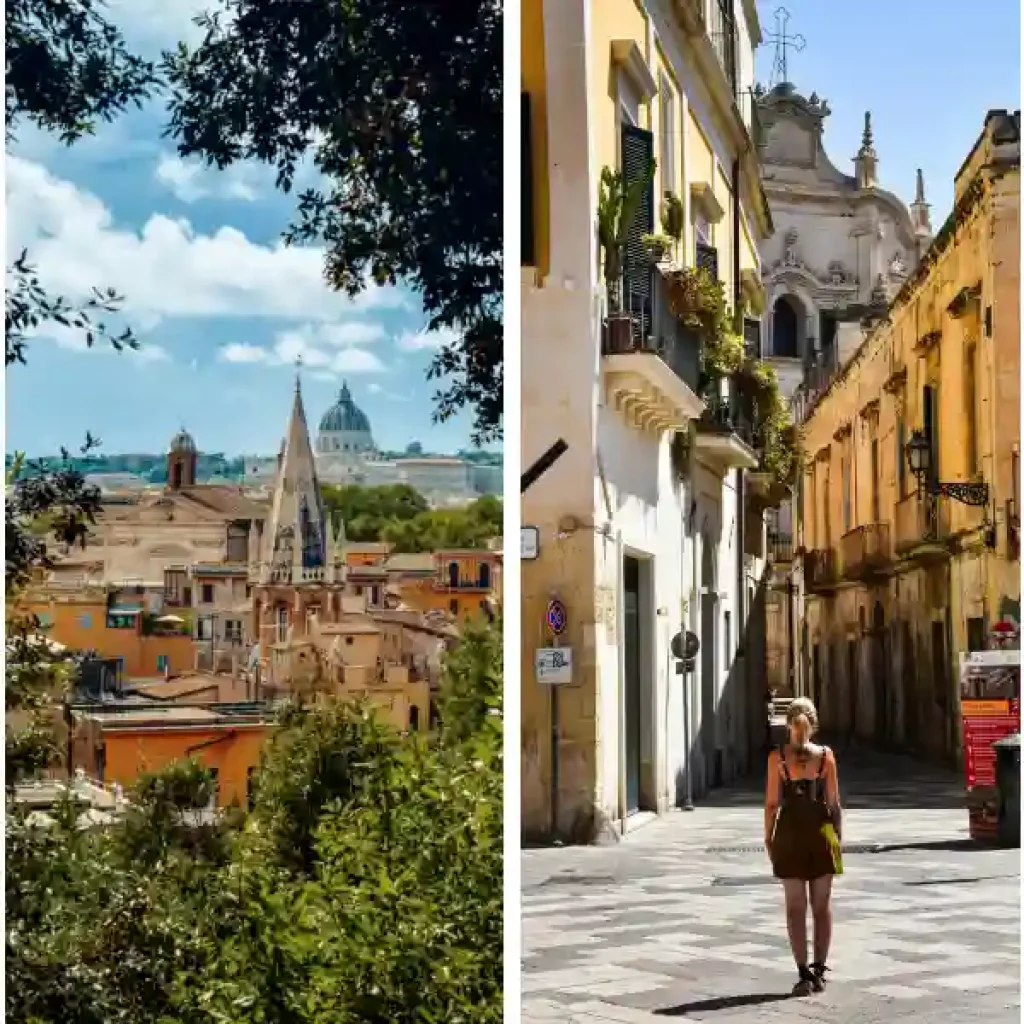15 Amazing Places to Go Without a Passport (U.S. Citizen Edition)
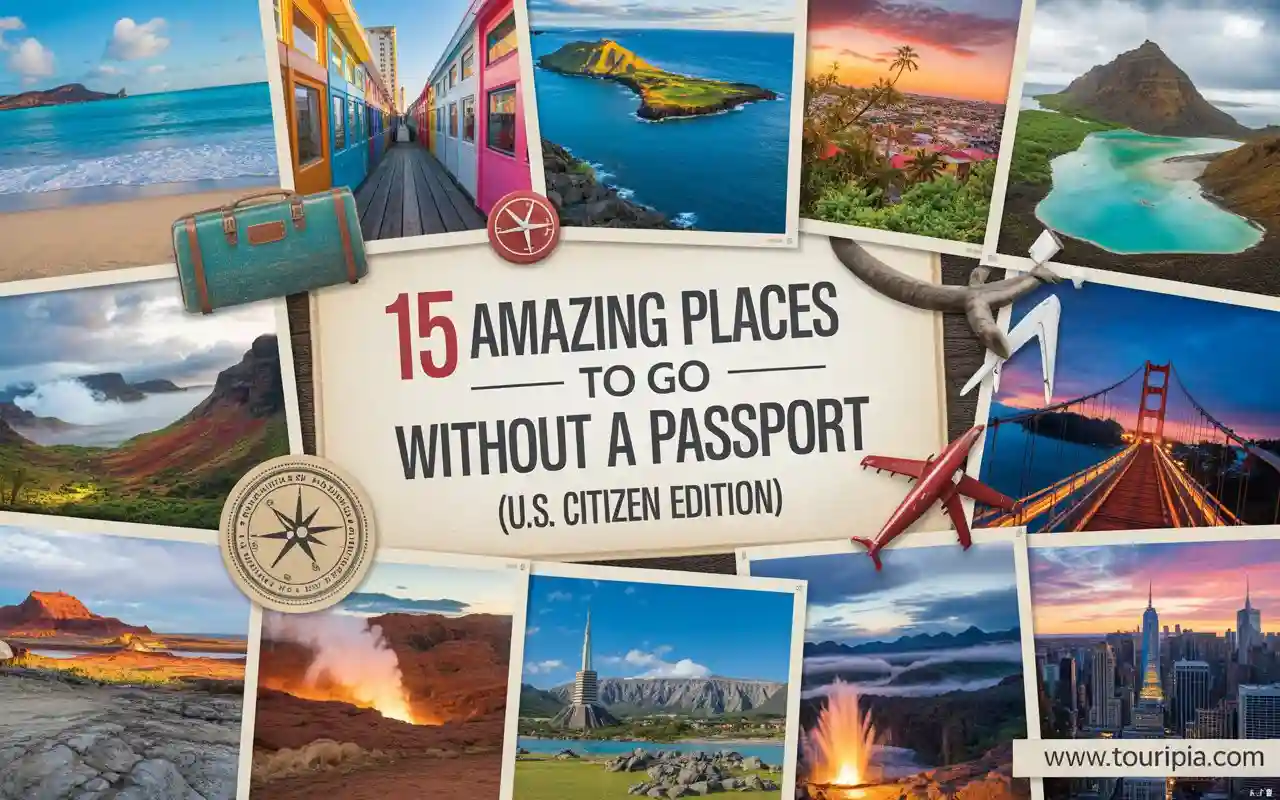
You don’t need to cross international borders or stand in long embassy lines just to chase turquoise waters or jungle trails. Honestly… I only figured this out by accident. I once planned a last-minute tropical escape, showed up at the airport, and—yeah—realized I’d left my passport in a kitchen drawer. Total panic. But then, surprise… the destination didn’t even require one.
Turns out, there are some truly incredible places to go without a passport if you’re a U.S. citizen. Think Caribbean beaches, misty rainforests, coral reefs, and even volcanic peaks… and not a single customs stamp required. You can hike, swim, eat ridiculously fresh seafood, and soak in cultures that feel worlds away—without ever showing your passport book.
In this guide, I’ll walk you through 15 of the best passport-free destinations for U.S. travelers. We’ll talk tropical getaways, cultural corners, bucket-list adventures, and a few places you maybe didn’t even realize were part of the United States.
Plus, I’ll throw in booking tips, what kind of ID you still need, and a few personal notes from past trips. Let’s dive in.
How It Works: Where Can U.S. Citizens Travel Without a Passport?
Okay, quick reality check—there’s a difference between “not needing a passport” and “not needing any documents.” As a U.S. citizen, you can travel to several destinations without a passport, but you still need to prove who you are. Usually, a state-issued ID or driver’s license works just fine (especially one that’s REAL ID compliant if you’re flying). For cruises, it gets even more flexible… but I’ll come back to that in a second.
So how is this possible? It all comes down to legal status. The U.S. has territories—places like Puerto Rico, Guam, and the U.S. Virgin Islands—that are under U.S. jurisdiction. That means you can fly there just like you would to any other state. No passport, no visa, no customs line (well… usually).
You’ll also find Closed-Loop Cruises that depart from and return to the same U.S. port, allowing travel to certain Caribbean Islands without needing a passport at all. But here’s the catch: you’ll need a certified U.S. birth certificate or possibly a passport card instead of the full booklet.
I’ve personally flown to San Juan and St. Thomas with just my driver’s license—and not once did anyone ask for more. But for safety’s sake, I always check the TSA and U.S. Customs and Border Protection websites a week before traveling, just in case something changes. (It happens.)
A quick heads-up: if you’re traveling with kids, double-check the ID requirements for minors. And emergencies? Well… having some kind of backup (like an Enhanced Driver’s License or Trusted Traveler Card) might save you a headache. Just something to think about.
15 Amazing Places to Go Without a Passport
1. Puerto Rico

It’s like stepping into a vibrant Caribbean postcard—only without the airport hassle. Puerto Rico blends colorful colonial charm with wild tropical beauty.
One moment you’re wandering the cobblestone streets of Old San Juan, and the next, you’re waist-deep in a bioluminescent bay, watching the water light up around your fingers.
Best Time to Go:
December through April, when it’s dry and warm… but honestly, it’s pretty great all year.
What to Do:
Hike through El Yunque National Forest, sip Piña Coladas in their birthplace, chill on Flamenco Beach, or get lost in the nightlife of Condado. Don’t skip the Castillo San Felipe del Morro—sunset up there is surreal.
Who It’s Great For:
Romantic getaways, solo soul-searchers, foodies, culture lovers. Pretty much anyone.
Local Culture Tip:
English is widely spoken, but slipping in a few Spanish phrases (“gracias” goes far) earns extra smiles. And Puerto Ricans are proud of their island… and rightly so.
Pro Travel Tip: U.S. cell plans usually work here without extra fees. That means no roaming panic. And flights are often cheaper than you’d expect—especially from the East Coast. Keep an eye out for all-inclusive vacations no passport needed promos, particularly off-season.
2. U.S. Virgin Islands (St. Thomas, St. John, St. Croix)
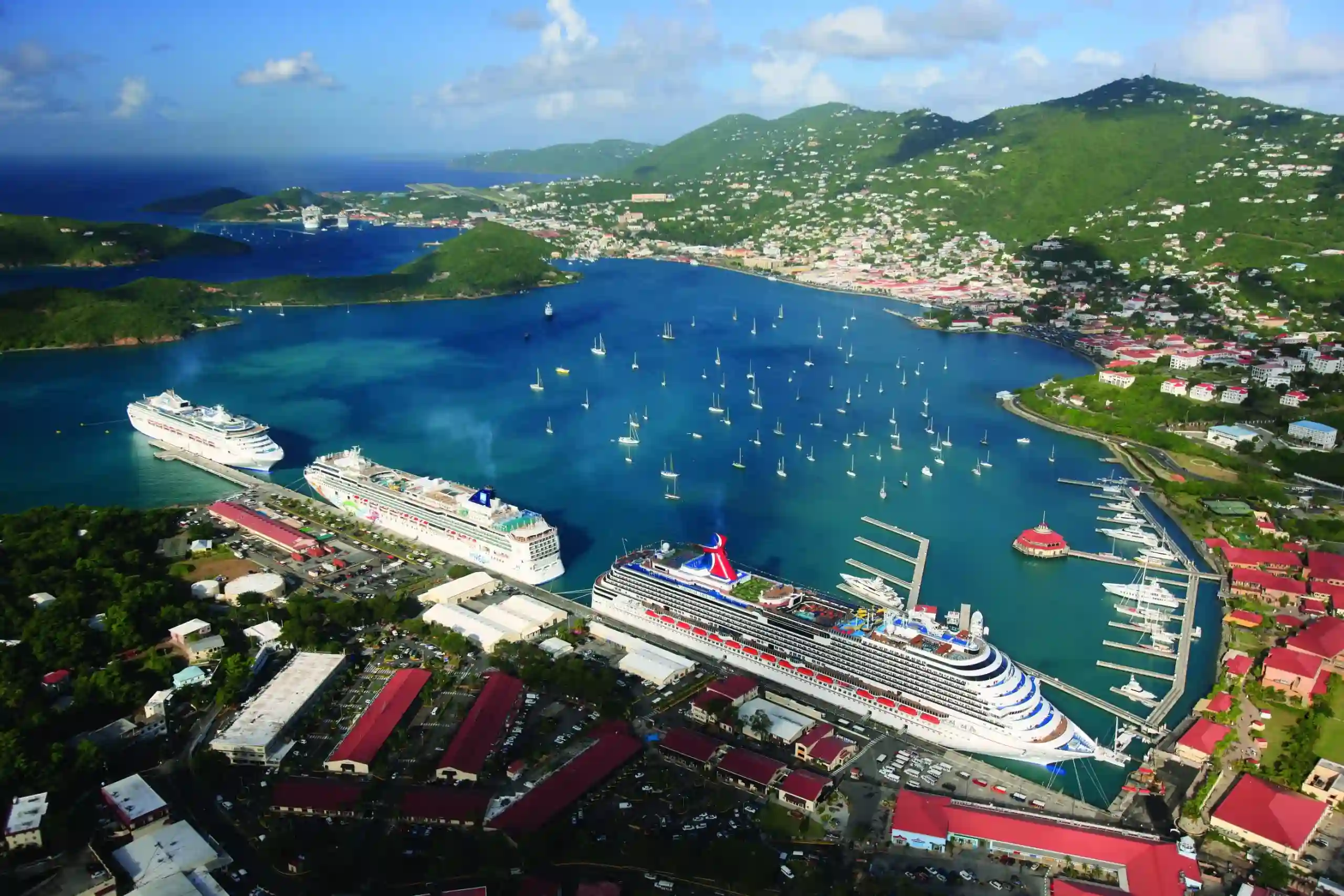
Honestly, the U.S. Virgin Islands are one of those places you can visit once and still daydream about for years.
Think sailboats drifting past jungle-covered hills, soft white-sand beaches, and quiet coves where the only sounds are waves and birds you can’t name. You can snorkel over shipwrecks or hike through Virgin Islands National Park and not see another soul for hours.
Best Time to Go:
Mid-April to June is ideal. Fewer crowds, warm water, and better hotel deals.
What to Do:
Snorkel the underwater trail at Trunk Bay, sail between the islands, visit the Buck Island Reef National Monument, or explore the historic Danish architecture in Christiansted. St. Thomas is busier, St. John is greener, and St. Croix has a little bit of both.
Who It’s Great For:
Couples craving romance, families who want real adventure, or anyone itching for a tropical escape that feels a bit like the Caribbean… but still technically the United States.
Local Culture Tip:
Island time is real. Things move slower. You’ll notice it in how people speak, how buses run, and how lunch can stretch into the afternoon. Don’t fight it—just lean into it.
Pro Travel Tip: If you’re flying in, bring a passport card or Enhanced Driver’s License just in case—you won’t need it, but some hotels or rentals might still ask for backup ID. Oh, and don’t forget reef-safe sunscreen. It’s the law.
3. Guam
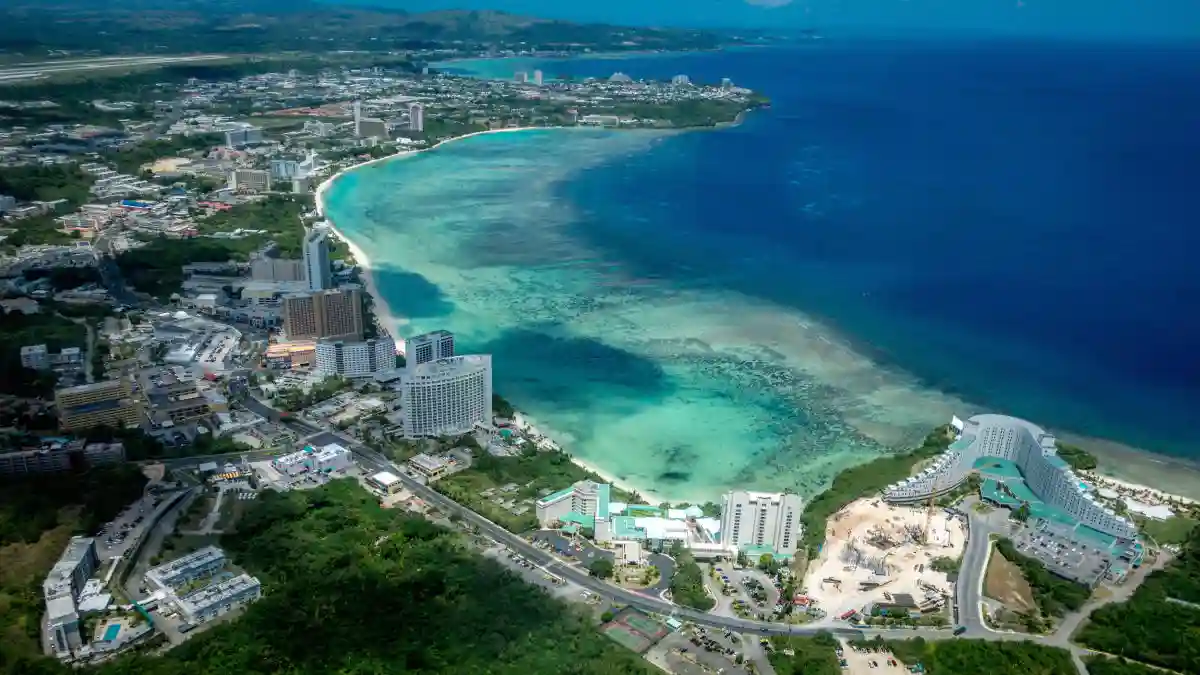
Way out in the Pacific, almost absurdly far from the mainland, lies Guam—a fascinating mash-up of American comfort and Chamorro culture. You’ve got white beaches and world-class diving, yes… but also mega-malls, fast food chains, and U.S. road signs. It’s a surreal, almost cinematic mix. And you can go there without a passport.
Best Time to Go:
January to May. Drier skies, fewer typhoons.
What to Do:
Dive into coral-filled waters off Tumon Bay, try Lau Lau (wrapped pork or fish steamed in taro leaves), or visit the ancient latte stone sites. If you’re into history, the WWII museums and caves add a whole other layer.
Who It’s Great For:
History buffs, scuba lovers, or anyone craving a taste of the Micronesian islands without the visa logistics.
Local Culture Tip:
Respect for elders runs deep in Chamorro tradition, and many locals still speak the language. A simple nod or “Håfa Adai” (hello) goes a long way. And public displays of anger? Definitely frowned upon.
Pro Travel Tip: It’s a long flight—seriously, pack snacks—but once you’re there, you’re still under U.S. laws. That means your U.S. driver’s license, phone plan, and healthcare insurance (in some cases) may work just fine. And yes, your birth certificate or Real ID gets you through TSA.
4. Northern Mariana Islands (Saipan & Tinian)
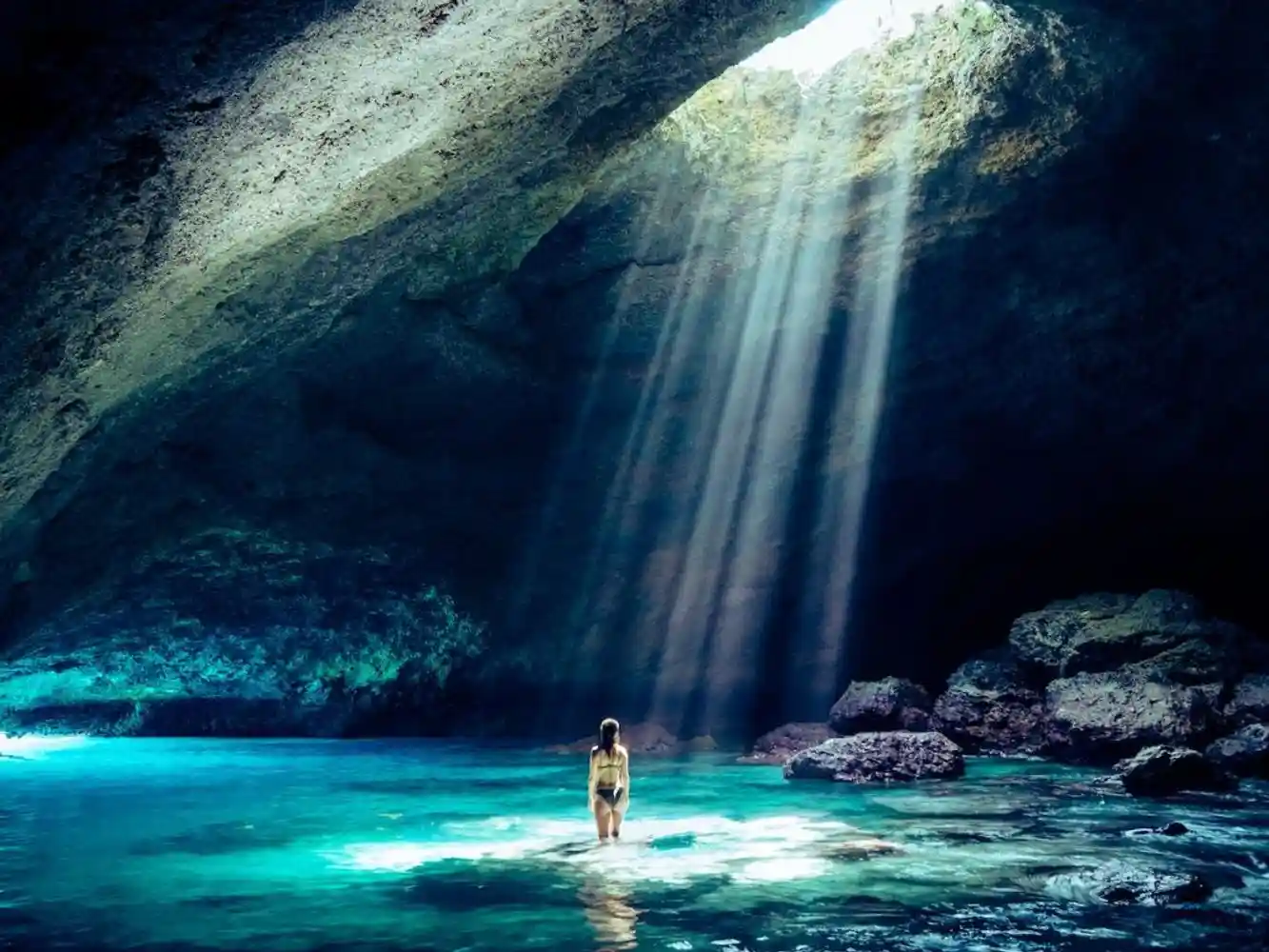
The Commonwealth of the Northern Mariana Islands might be one of the most under-the-radar gems for U.S. travelers. Saipan, Tinian, and Rota offer empty beaches, WWII-era caves, and these rugged coastlines that feel almost untouched. You won’t find mega-resorts here… but that’s kind of the point.
Best Time to Go:
February through July is best. Dry season, but still lush.
What to Do:
Explore Mount Tapotchau, swim in the Grotto, or wander the eerie remains of Japanese bunkers. If you’re into quiet, surreal landscapes and deep history, Tinian in particular hits different.
Who It’s Great For:
Slow travelers, photographers, anyone looking to disconnect (on purpose).
Local Culture Tip:
There’s a strong sense of pride in the land, especially among older locals. Ask before wandering onto remote beaches or sacred sites. Also, don’t be surprised if strangers wave at you on the road—it’s a thing here.
Pro Travel Tip: This isn’t a typical tourist circuit, so plan your itinerary in advance. Local transport can be inconsistent, and flights from the mainland often stop through Guam or Honolulu. Still, U.S. citizens can enter freely with just a passport card, Real ID, or even just a certified birth certificate. No visa, no passport, no problem.
5. American Samoa
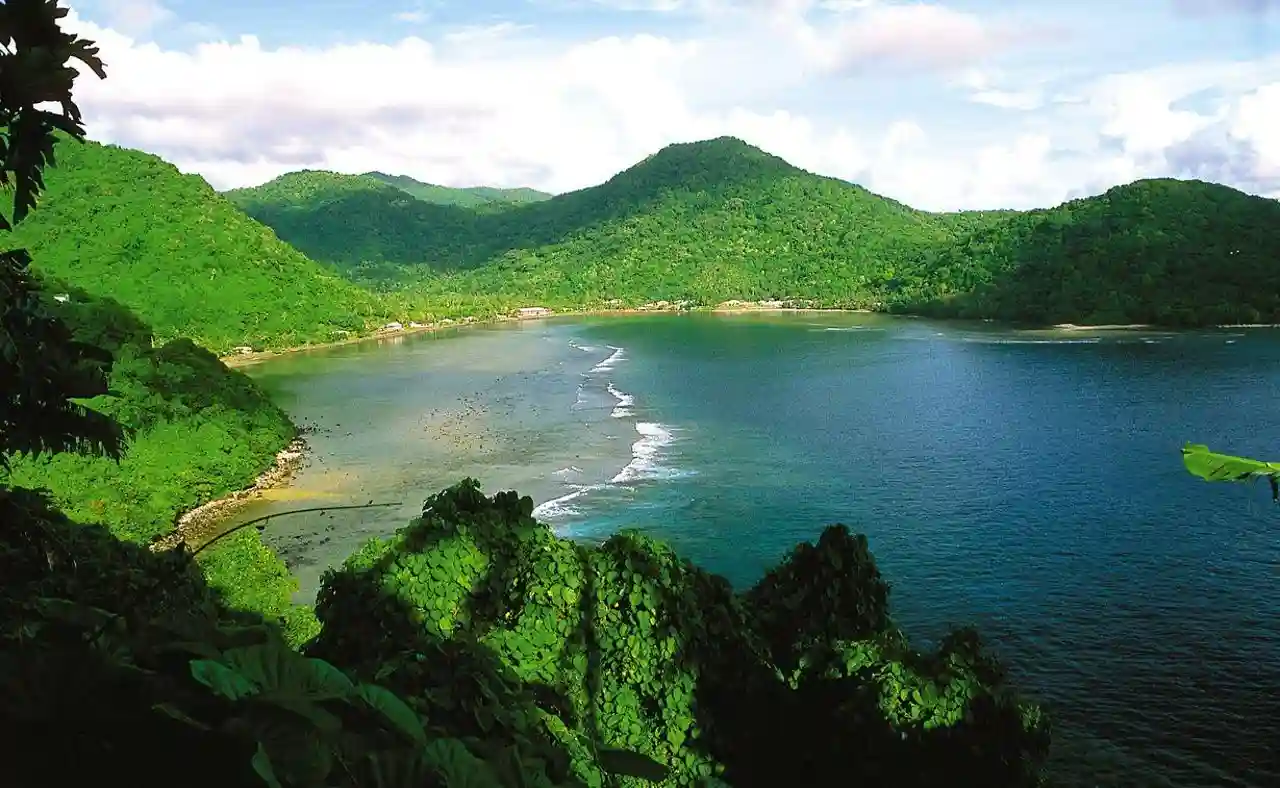
This is where the phrase “off the beaten path” really earns its stripes. American Samoa is wild, spiritual, and refreshingly unpolished. It’s home to the only U.S. national park south of the equator — the National Park of American Samoa — where you can hike through rainforests, scale volcanic peaks, and spot flying foxes hanging from breadfruit trees. It doesn’t feel like the U.S., but it is.
Best Time to Go:
May to September is drier and easier to navigate.
What to Do:
Trek the ridgelines of Tutuila, swim in crystalline coves, or share Lau Lau and fresh grilled tuna at a Fia Fia night (it’s like a cultural dance-and-dinner thing). Pago Pago, the capital, is a great home base—but it’s really the villages that stay with you.
Who It’s Great For:
Nature addicts, off-grid travelers, those who want culture over cocktails.
Local Culture Tip:
Samoan culture is rooted in fa’a Samoa—family, respect, spirituality. Always ask before taking photos, and dress modestly if you’re visiting a local village or attending church.
Pro Travel Tip: Health stuff matters here. Bring travel insurance, double-check vaccine requirements, and keep an eye on weather alerts. You’ll likely need to connect through Hawai‘i or independent Samoa. And while U.S. citizens don’t need a passport, you’ll still want a Real ID, and maybe print your proof of citizenship just to smooth over any airline questions.
6. Hawaii – Volcanic islands
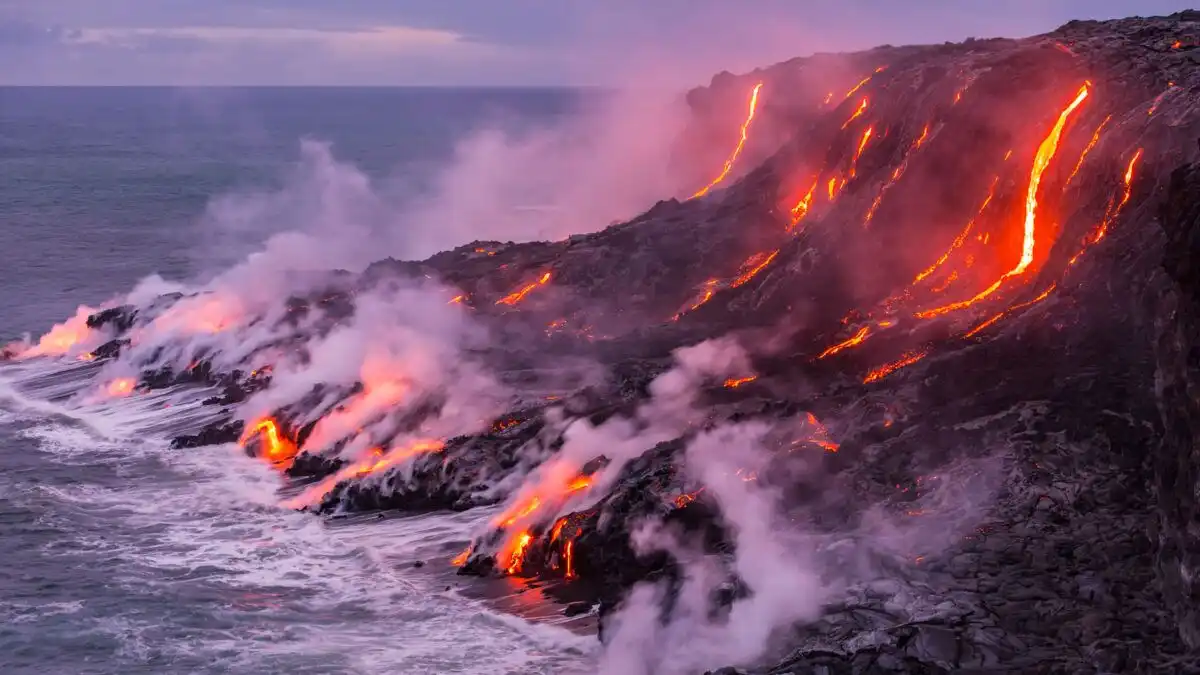
Hawaii is that place people dream of… and then go back to over and over. Yes, it’s technically a state, but honestly, it still deserves its spot on this list of places to go without a passport—because it often feels international. The Polynesian influences, the volcanic terrain, the spiritual energy… it’s something else.
Best Time to Go:
Spring (April to early June) and fall (September to mid-November) are sweet spots for weather and flight prices.
What to Do:
Surf Waikiki, sip fresh Kona coffee on the Big Island, hike the cliffs of Waimea Canyon, or stay up all night chasing stars from a lava field. If you can, island-hop. Each has its own vibe—Oahu’s fast, Kauai’s lush, Big Island’s fiery, and Maui… well, Maui might just ruin all other beaches for you.
Who It’s Great For:
Couples, families, solo travelers—anyone looking for that mix of nature, food, and relaxation.
Local Culture Tip:
Support local. Skip the mainland chains and spend at family-run cafés or farms. Learn a bit of Hawaiian language. Even a simple “mahalo” (thank you) carries weight when it’s said with heart.
Pro Travel Tip: No passport needed, but TSA agents are strict—so make sure your REAL ID-compliant driver’s license is good to go. Some island rentals or hotels might ask for backup, so having your passport card or Trusted Traveler card (like Global Entry) can speed things up. Bonus: U.S. phone coverage works, so no roaming surprises.
7. Alaska (via Cruise or Air)
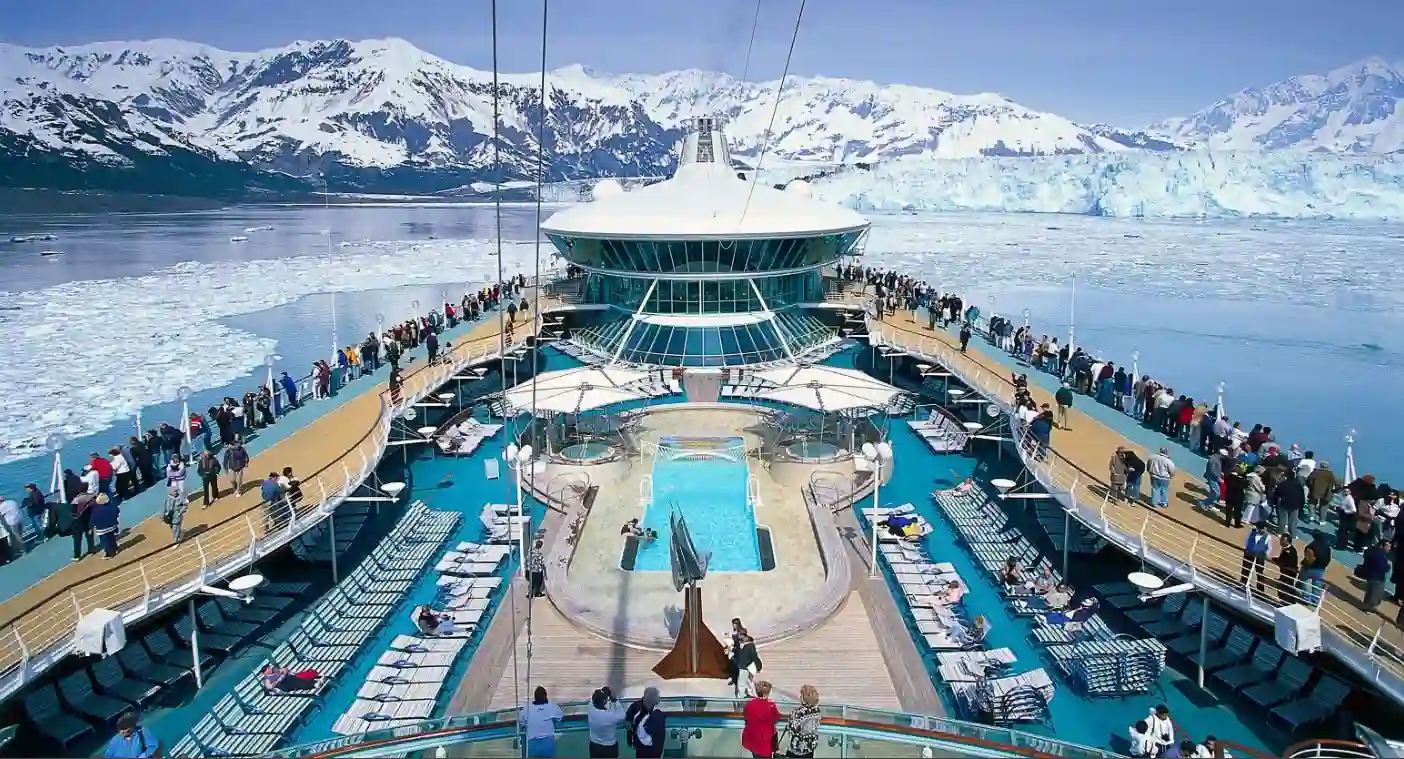
Alaska is so jaw-droppingly big, it makes the Lower 48 feel like a backyard. Glaciers the size of skyscrapers, bears the size of sedans, and national parks you can only get to by bush plane. It’s remote. Wild. But still the United States… which means, yep, you don’t need a passport to explore it.
Best Time to Go:
June to August, unless you’re chasing the Northern Lights in shoulder seasons.
What to Do:
Hop on a Closed-Loop Cruise through the Inside Passage, kayak near icebergs, or ride the Alaska Railroad past Denali. Hike in places with more moose than people, or just sip whiskey in a woodsy lodge and pretend you’re in a Jack London novel.
Who It’s Great For:
Cruise lovers, wildlife fanatics, people who like their peace and quiet… served with a side of wow.
Local Culture Tip:
Alaskans are laid-back, but they value self-reliance. Pack smart, plan ahead, and don’t expect things to run on the same schedule as a city vacation. Weather changes fast here.
Pro Travel Tip: If you’re cruising round-trip from Seattle or another U.S. port, you may not need a passport at all thanks to the Western Hemisphere Travel Initiative. Just a certified U.S. birth certificate and a state-issued ID will usually do. If you fly, a REAL ID will get you past TSA. Still, check the DHS website before you go… things change.
8. U.S. Minor Outlying Islands (Adventure in Palmyra Atoll)

So this one’s a little different… and, to be fair, a little tricky. The U.S. Minor Outlying Islands include a bunch of remote places most Americans have never heard of—like Palmyra Atoll, Midway, and a few other scattered specs of land across the Pacific.
These are mostly uninhabited, rugged, and… well, fascinating if you’re into off-grid travel, coral atolls, and true isolation.
Best Time to Go:
Access is limited and usually weather-dependent, but dry season (around June to September) is your best shot.
What to Do:
If you can swing a trip to Palmyra Atoll, expect total seclusion. Birdwatching, marine biology research (often with permission only), kayaking through mangroves, and sleeping under more stars than you’ve probably ever seen. It’s not luxury—it’s raw, untouched nature.
Who It’s Great For:
Adventurers, scientists, and honestly… very determined bucket-listers. You’ll need patience, permits, and probably a connection to a conservation org.
Local Culture Tip:
There isn’t one. These places aren’t populated, which is part of the mystique. But respect is still critical—these ecosystems are fragile, and any visit should be low-impact.
Pro Travel Tip: There are no hotels, no restaurants, no cell service. You might need to arrange a scientific expedition, research trip, or specialized boat charter. But for the record, U.S. citizens still don’t need a passport to visit—though the logistics make it feel like another planet. Double-check everything with the U.S. Department of the Interior before even thinking about going.
9. Florida Keys
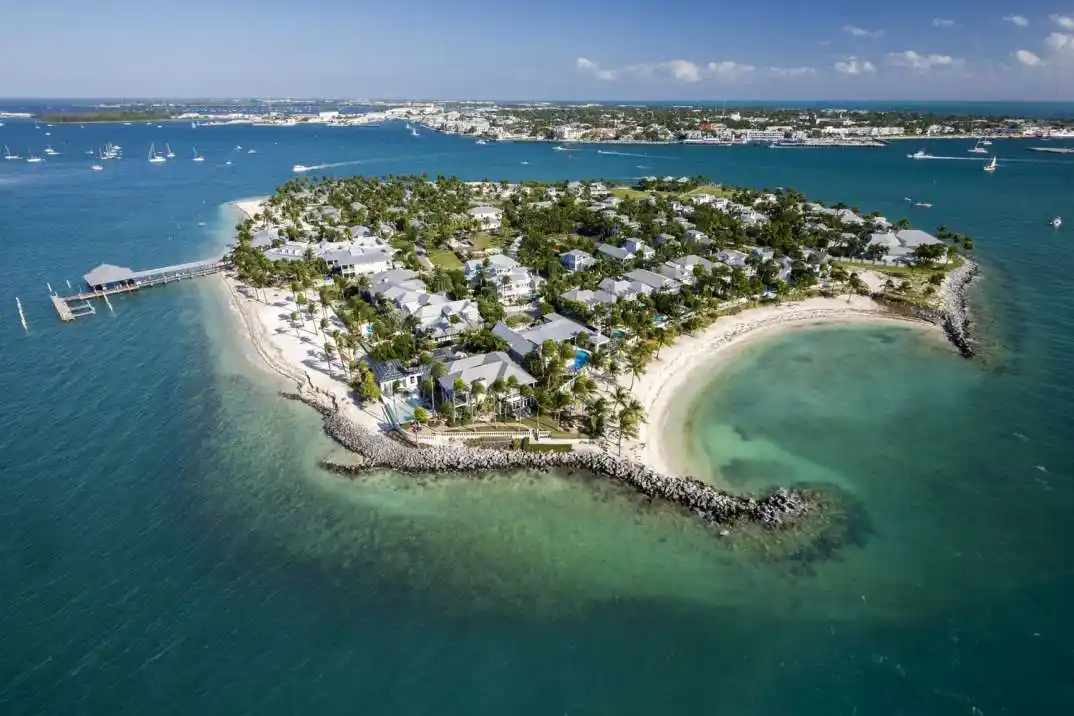
This is where mainland U.S. casually turns into a tropical oasis. The Florida Keys are strung out like little steppingstones toward the Caribbean, and while technically part of Florida, they’ve got an entirely different rhythm.
Picture salt air, pastel cottages, and margaritas at sunset. If you squint, you might think you’re already in the Bahamas… except you’re still on U.S. soil.
Best Time to Go:
Winter and early spring are peak, but late summer brings deals (and yes, occasional storms).
What to Do:
Drive the Overseas Highway, snorkel in John Pennekamp Coral Reef State Park, visit Southernmost Point in Key West, or just relax at the Southernmost Beach Resort. Duval Street is chaos in the best way, and for something quiet, head to Bahia Honda State Park.
Who It’s Great For:
Weekenders, sun-chasers, and people who want cheap beautiful places to travel without a passport that still feel like an escape.
Local Culture Tip:
The Keys are proud of their laid-back identity. Conch Republic flags wave proudly. Dress down, be patient, and let go of mainland expectations.
Pro Travel Tip: You can drive, ferry, or even take a seaplane. No passport, no customs, no stress. Just bring your state ID or REAL ID if you’re flying into Key West. Bonus: if you’re road-tripping, you don’t even need to deal with TSA.
10. Catalina Island, California
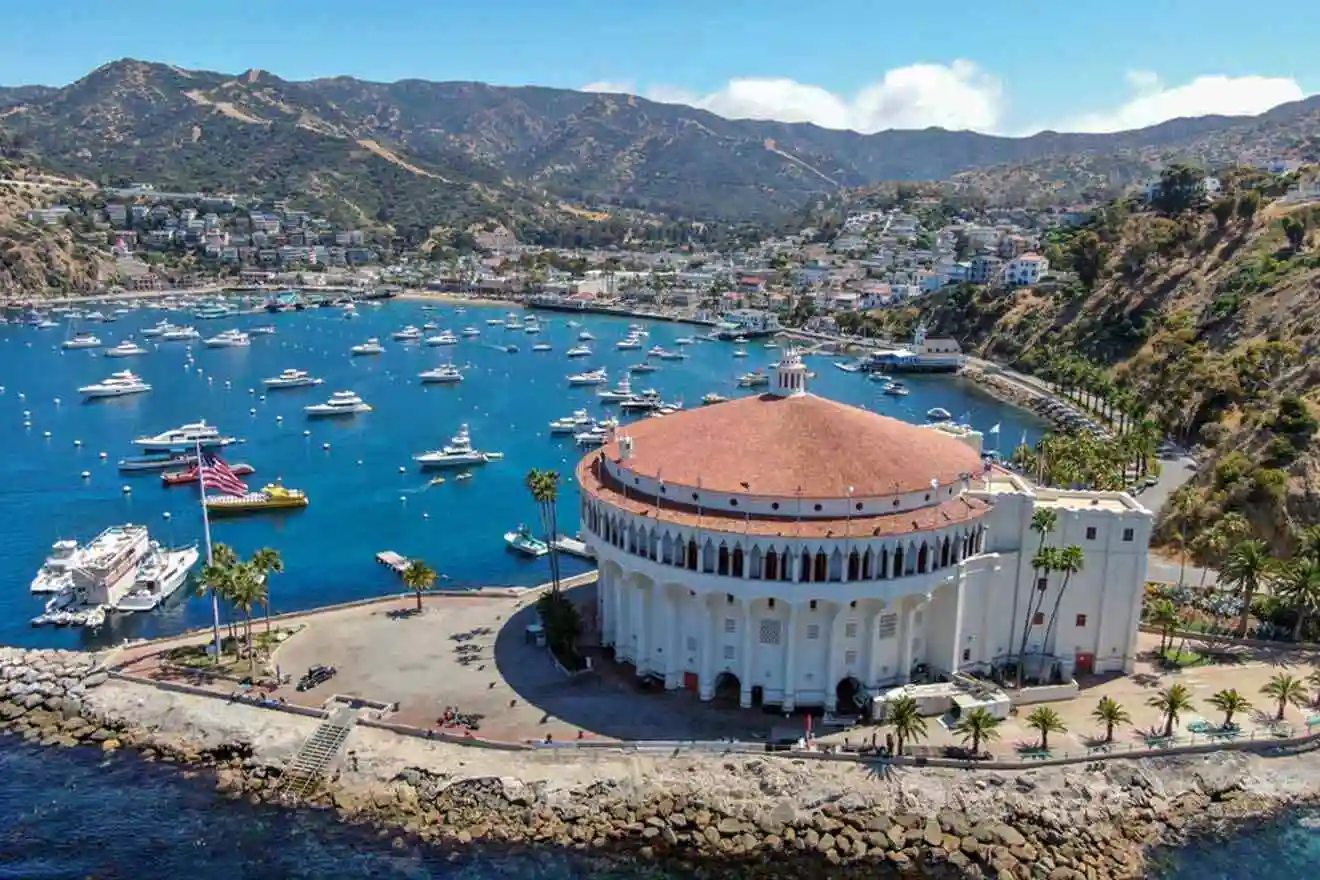
Just off the coast of Los Angeles, Catalina Island somehow feels like you’re arriving in a different country… or time zone… or maybe just a Wes Anderson movie. It’s colorful, kitschy, and beautifully weird. And it’s a tropical-ish getaway that’s shockingly easy to reach.
Best Time to Go:
Spring and fall avoid the summer cruise crowds but still give you sunny days.
What to Do:
Rent a golf cart and explore Avalon, take a glass-bottom boat tour, hike into the island’s interior for panoramic views, or have lunch with wild bison nearby (not kidding). You can even snorkel in crystal-clear waters steps from the main dock.
Who It’s Great For:
Romantic couples, solo day-trippers, or anyone craving a mini escape without a flight or a passport.
Local Culture Tip:
Catalina is touristy—but in a charming, 1950s California kind of way. People are friendly, and shops close early. Bring cash if you’re heading to the less-developed side.
Pro Travel Tip: Just hop a ferry from Long Beach, Dana Point, or San Pedro. No passport needed. A valid state ID is all you need. Some hotels book out fast on weekends, so plan ahead if you’re eyeing a quiet retreat.
11. Native American Reservations (e.g., Navajo Nation, Hopi Lands)

You don’t need a passport to have a cross-cultural travel experience. Exploring Native American reservations—like the sprawling Navajo Nation in Arizona or the Hopi lands tucked into the mesas—feels like entering a space with its own pace, language, and spiritual rhythm. These are sovereign nations with deep-rooted traditions and landscapes unlike anywhere else in the U.S.
Best Time to Go:
Spring and fall avoid the high desert heat and bring out some breathtaking colors.
What to Do:
Tour Antelope Canyon, stand on the edge of Canyon de Chelly, attend a powwow if one’s open to visitors, or buy handcrafted jewelry and rugs directly from the artisans.
Who It’s Great For:
Cultural travelers, families wanting something deeper than a resort, and folks curious about the United States’ diverse history—in the real sense.
Local Culture Tip:
These communities have their own rules, customs, and even laws. Always ask before taking photos, and respect any areas marked off-limits. A little humility goes a long way.
Pro Travel Tip: No passport needed, but you’re technically entering a different legal space—some areas might not have standard cell coverage or even follow U.S. state laws. Carry cash, follow local guidance, and avoid assuming. Also, don’t call it “international” travel… even if it kind of feels like it.
12. St. Lawrence River Cruises (U.S.-Only Routes)

Want to feel like you’re cruising through Europe-lite without the passport stamp? A Closed-Loop Cruise along the St. Lawrence River, staying within U.S. waters, gives you that taste of elegance, old-world architecture, and winding riverbanks… without ever leaving the country.
Best Time to Go:
Late summer into early fall for that crisp air and fall foliage show.
What to Do:
Sail from Great Lakes ports to quiet river towns, enjoy wine tastings, lighthouse tours, and maybe a jazz brunch or two on the deck. If you’re lucky, you’ll spot whales or bald eagles along the route.
Who It’s Great For:
Older travelers, romantic getaways, anyone who wants international vibes without dealing with visa policies, airport lines, or customs forms.
Local Culture Tip:
Dress smart-casual for onboard dinners. These cruises often lean traditional, even old-school.
Pro Travel Tip: Because this is a Closed-Loop Cruise that starts and ends at the same U.S. cruise port, no passport is required under the Western Hemisphere Travel Initiative. Just bring a certified birth certificate and photo ID. But double-check with your cruise line—they can be picky.
13. Texas Gulf Coast (Port Aransas, Galveston, South Padre)
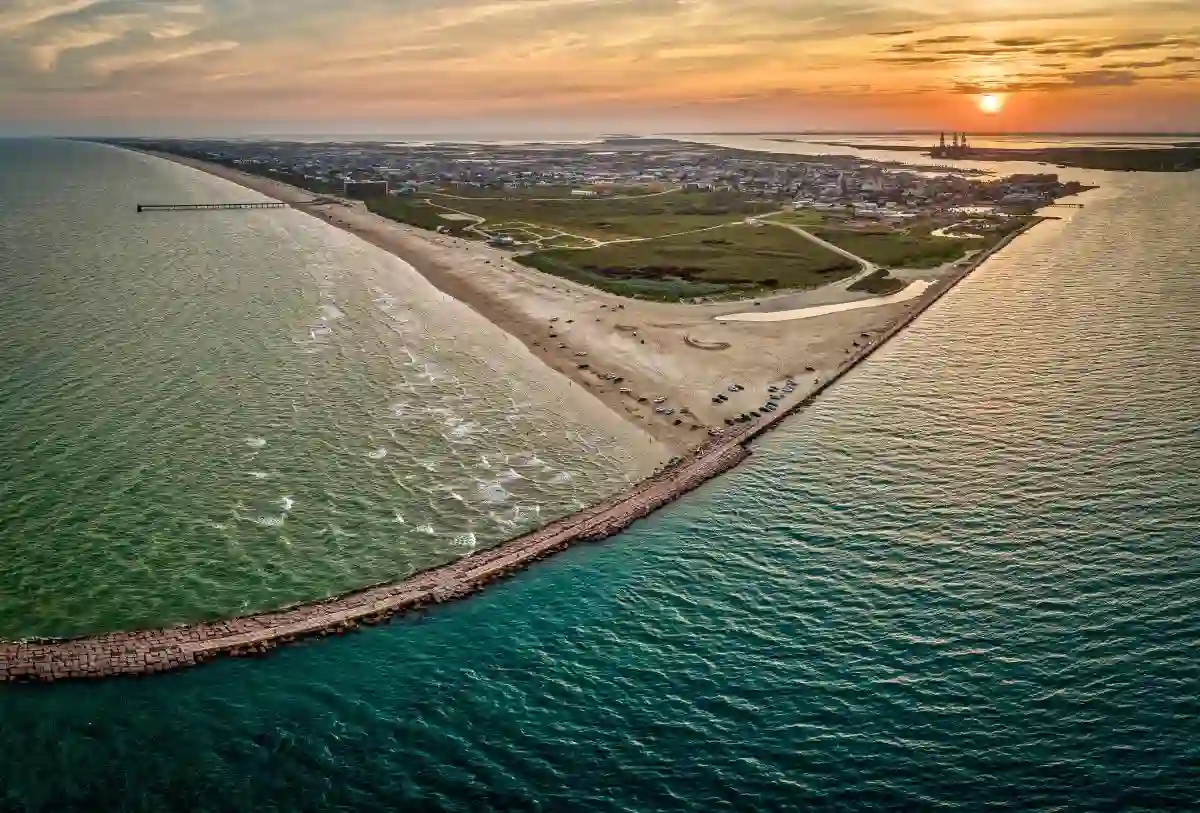
Texas isn’t just wide open plains and BBQ joints—though there’s plenty of that, too. The Texas Gulf Coast has beach towns with a laid-back attitude, warm water, and the kind of sunsets that make you rethink flying to Mexico. It’s easy, it’s American, and yes… you can travel without a passport.
Best Time to Go:
Spring and fall—before the full summer humidity kicks in.
What to Do:
Catch waves in Port Aransas, stroll the boardwalk in Galveston, or go dolphin-watching near South Padre Island. The seafood is criminally underrated.
Who It’s Great For:
Families, road trippers, and folks searching for cheap beautiful places to travel without a passport but still get sand in their shoes.
Local Culture Tip:
Texans are proud—and generous. Chat with locals. They’ll give you restaurant recs, fish tales, and maybe even a homemade hot sauce to take home.
Pro Travel Tip: No flights? No problem. This region is made for road trips. And if you’re cruising out of Galveston cruise port, you might be able to join a passport-free cruise itinerary too—more on that next.
14. U.S. Cruise Ports (Closed-Loop Cruises)
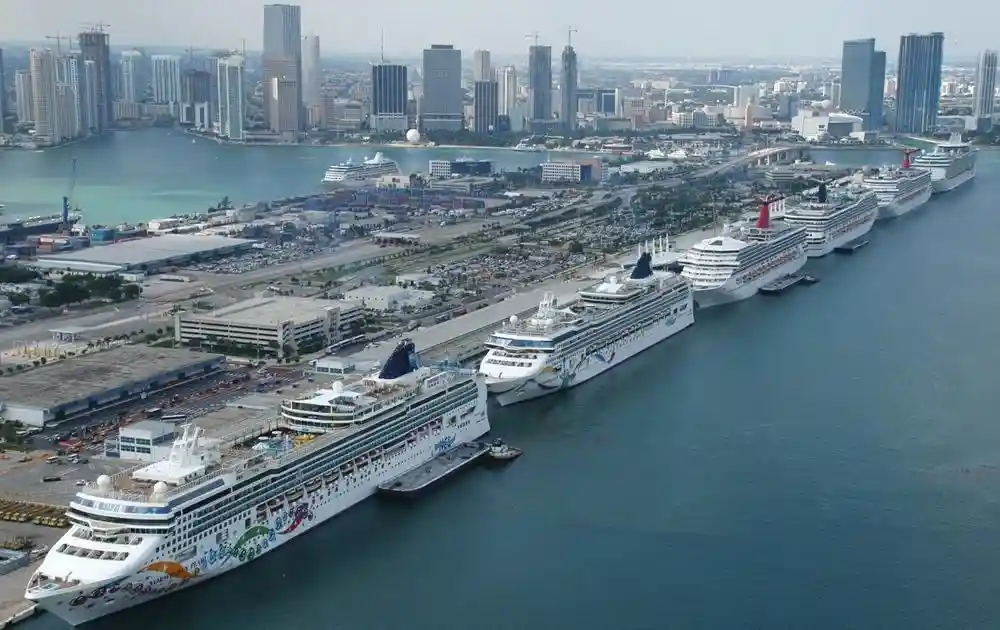
Here’s the loophole most people still don’t believe when I tell them: you can visit parts of the Caribbean without a passport… as long as you’re on a Closed-Loop Cruise. That means your cruise departs from and returns to the same U.S. cruise port. Magic? Nope. Just cruise rules.
Best Time to Go:
Depends on where you’re cruising—but winter and early spring are popular for Caribbean itineraries.
What to Do:
Cruise lines offer routes to The Bahamas, Dominican Republic, and U.S. Virgin Islands, with optional stops in places like Puerto Rico. Lounge on white sand, sip something cold and citrusy, take a snorkeling excursion… and be back onboard by sundown.
Who It’s Great For:
Relaxation-first travelers. Also families and couples who like waking up in a new place without unpacking their suitcase.
Local Culture Tip:
Even though you may be docking in Caribbean Islands, the cruise bubble is very much a curated experience. If you want something more local, book independent shore excursions—but do your research first.
Pro Travel Tip: Bring a certified U.S. birth certificate and a valid government-issued photo ID—or better yet, a U.S. passport card if you’ve got one. Also worth considering: enroll in Trusted Traveler Programs like Global Entry or NEXUS, which can speed up re-entry lines.
15. Washington, D.C. Immersion Staycation
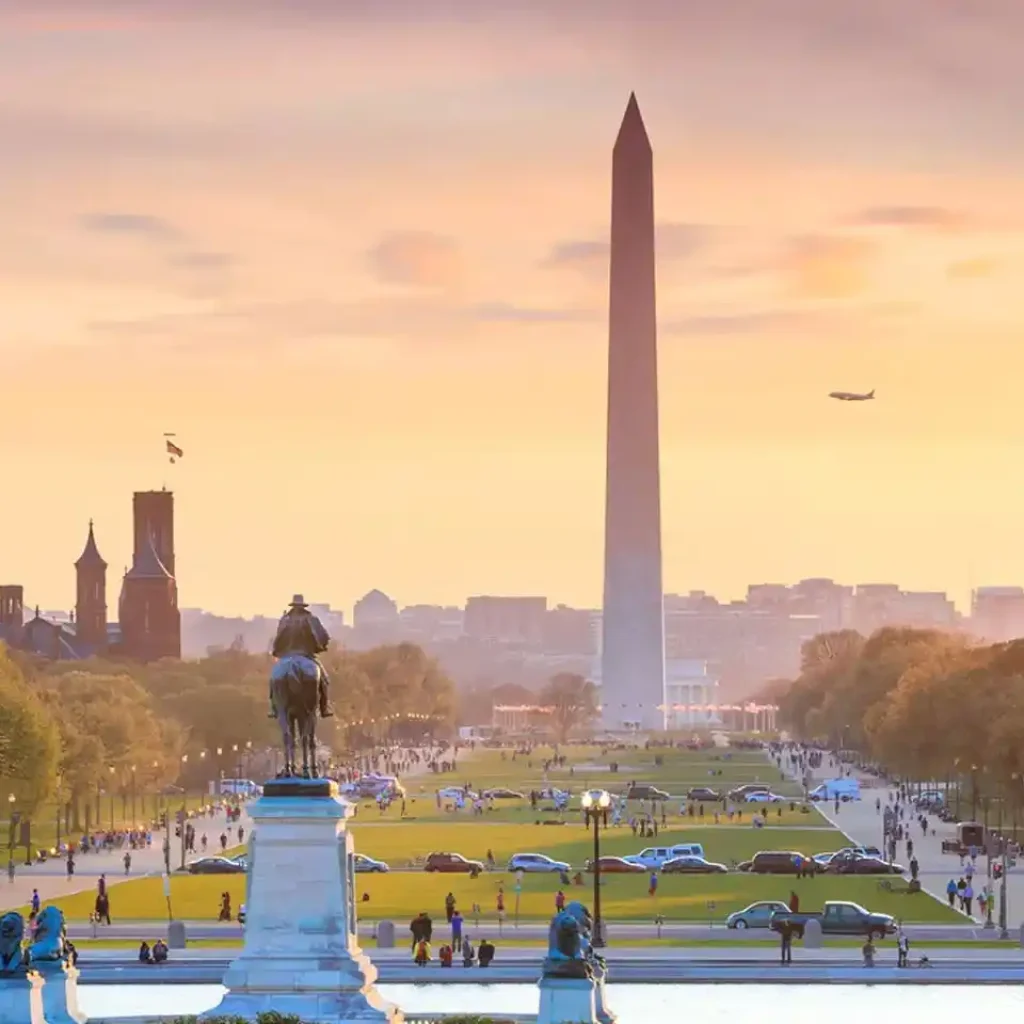
Maybe this feels like cheating… but hear me out. A long weekend in Washington, D.C. can feel surprisingly global. Embassy Row.
International food. Smithsonian museums covering everything from African art to ancient Persian coins. You can walk one block and hear three different languages. And the best part? It’s all in your own backyard.
Best Time to Go:
Spring for cherry blossoms, or fall for crisp walks and fewer crowds.
What to Do:
Wander Dupont Circle, eat your way through Adams Morgan, or lose a whole day inside the National Gallery. Don’t miss the Smithsonian Folklife Festival if you’re around in summer—it’s like circling the globe from the National Mall.
Who It’s Great For:
Budget-conscious travelers, history buffs, solo city explorers.
Local Culture Tip:
D.C. isn’t all politics. There’s a thriving creative community, incredible black-owned businesses, and surprisingly green spaces like Rock Creek Park. Get past the monuments, and the city opens up.
Pro Travel Tip: No passport, no problem. Just hop on a train or drive in with your Real ID in hand. Consider booking a suite-style stay at places like Suite Lifestyle for longer trips—it feels more like a home base than a hotel.
What to Know Before You Go
Alright, so you’re hyped about the idea of passport-free travel…but don’t book that ticket just yet. While skipping the passport line sounds dreamy, there are still a few important things to prep before you set off.
Documents You Still Need
Even though you’re staying within U.S. jurisdiction, you’ll want to carry proper identification. Some essentials:
- REAL ID (by the new TSA deadline, it’ll be required for domestic air travel)
- Cruise documents, especially if you’re doing a closed-loop cruise (leaving and returning to the same U.S. port)
- Proof of citizenship (like a birth certificate or passport card) just in case—yes, even in places like the U.S. Virgin Islands
Basically, no passport doesn’t mean no paperwork.
Health Considerations
Traveling within U.S. territories doesn’t give you a free pass on health planning either. For destinations like American Samoa, certain vaccines might still be recommended. And don’t overlook travel insurance—even in familiar-sounding places, medical costs and emergency services can be tricky.
Budget Watchouts
Here’s the curveball: some of these territories, especially remote island destinations, are actually more expensive than international hot spots. Why? Imported goods, limited lodging, seasonal tourism—all impact prices. Want to save? Avoid peak times and book inter-island flights early (looking at you, Hawaii).
Responsible Travel Tips
A lot of U.S. territories are home to indigenous cultures and fragile ecosystems. So:
- Buy from local vendors
- Stay in locally owned accommodations
- Be extra mindful of your environmental footprint
Also, Wi-Fi might be spotty on outer islands, and your usual phone plan? Might rack up roaming charges if you’re not careful—double check your carrier’s coverage before you board that plane.
Final Thoughts
Here’s the thing most people overlook—traveling within U.S. territories can be just as transformative as jetting off to Europe or Southeast Asia. Seriously.
You still get the beach sunsets, the cultural discoveries, the local food that surprises you… and yeah, maybe even the occasional travel mishap that becomes a funny story later. Just without the customs line or passport panic.
There’s a freedom to knowing you can pack light and leave the passport behind. Whether it’s snorkeling in St. John, hiking volcanoes in Hawaii, or soaking in the slow pace of island life in Guam, these trips can be just as eye-opening and soul-refreshing as anything stamped in your passport.
So here’s a thought: why not give it a try? Which one are you booking first? Leave a comment—I’m genuinely curious.
Frequently Asked Questions
1. Do I need a passport for Puerto Rico or the U.S. Virgin Islands?
Nope! Just a valid government-issued photo ID like a driver’s license or REAL ID.
2. Can I go on a cruise without a passport?
Yes—if it’s a closed-loop cruise (leaves and returns to the same U.S. port), you can use a birth certificate and photo ID.
3. What documents do I need to fly to U.S. territories?
A REAL ID-compliant license (or equivalent) should be fine, but always check with the airline for any extra requirements.
4. Are these places considered “international”?
No, they’re U.S. territories, so they fall under domestic travel rules—even if they feel like international getaways.
5. What are the best months to travel to these places?
Avoid hurricane season (typically June–November). For most territories, December to April offers the best weather and vibe.
6. Is travel insurance recommended?
Definitely. Even though you’re technically staying “in the U.S.,” emergency costs and cancellations can still get pricey.
7. Can I use my U.S. phone/data there?
In most places, yes—but check your provider. Some carriers treat U.S. territories as “international” when it comes to data plans.
Recent Posts
 Tubeseferi: 7 Must-Know Features for Smart City Travel in 2025
Tubeseferi: 7 Must-Know Features for Smart City Travel in 2025 What Is Antolohe? Hidden Travel Meaning Revealed for 2025
What Is Antolohe? Hidden Travel Meaning Revealed for 2025 How to Become a Travel Agent Without Experience?
How to Become a Travel Agent Without Experience? 15 Best Airlines for Long Flights in 2025: Comfort, Cuisine, and Sky-High Service
15 Best Airlines for Long Flights in 2025: Comfort, Cuisine, and Sky-High Service Day Trips from Buenos Aires: Surprising Routes Off the Tourist Trail
Day Trips from Buenos Aires: Surprising Routes Off the Tourist Trail




